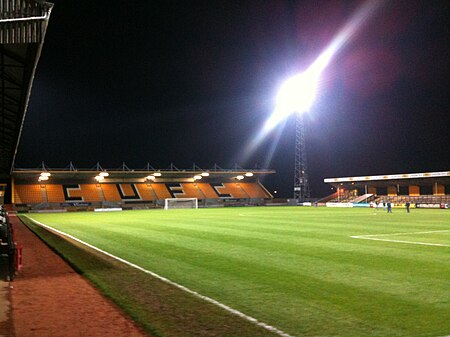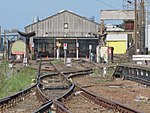Abbey Stadium

Abbey Stadium is a football stadium in Cambridge, England. It has been the home ground of Cambridge United F.C. since 1932, and currently has a maximum capacity of 7,937 spectators. Cambridge Regional College F.C., Cambridge United's feeder club, played their home games at The Abbey from 2006 until their dissolution in 2014. The first match ever played at the Abbey was a friendly against a team from Cambridge University Press on 31 August 1932. The record attendance at the ground (14,000) was also for a friendly, against Chelsea to mark the first use of the ground's new floodlights on 1 May 1970. This was the first time an English League ground's record crowd had turned out to watch a friendly. Until well into the modern era, the Abbey Stadium was the only Football League ground to be styled a stadium, and was second only to Wembley Stadium in so being named. However, more recent ground moves and name changes have meant that a number of league clubs now play at grounds styled stadiums. For sponsorship reasons, the ground was until 2017 officially named the Cambs Glass Stadium. For similar reasons it has also previously been named the Trade Recruitment Stadium, and the R Costings Abbey Stadium. However, thanks to the cooperation of sponsors the ground has reverted to its original name of the Abbey Stadium.
Excerpt from the Wikipedia article Abbey Stadium (License: CC BY-SA 3.0, Authors, Images).Abbey Stadium
Newmarket Road, Cambridge Barnwell
Geographical coordinates (GPS) Address Nearby Places Show on map
Geographical coordinates (GPS)
| Latitude | Longitude |
|---|---|
| N 52.2121 ° | E 0.15415 ° |
Address
Newmarket Road
CB5 8LG Cambridge, Barnwell
England, United Kingdom
Open on Google Maps










